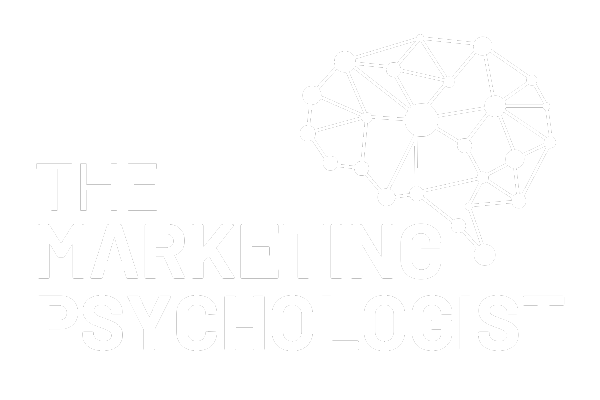Cracking the Code
How Psychology Builds Deeper Audience Connections
When I first began my career in marketing, I approached audience identification the way most of us do — through the comfortable certainty of demographics. Age, location, income, education. These data points created an illusion of understanding that I clung to, believing they would unlock meaningful connection.
They didn't.
It wasn't until 10 years later, pouring myself into applied psychology, that I encountered Daniel Kahneman's work on dual-process thinking that I recognized what was missing. While I had been crafting messages for the rational, analytical System 2 mind, most purchasing decisions emerge from the intuitive, emotional realm of System 1 (Kahneman, 2011).
I had been speaking to the wrong part of the brain all along.
The Emotional Core of Decision-Making
Beyond Rational Choice Theory
We've convinced ourselves that consumers make rational choices. They don't.
In my work with clients across industries, I've witnessed how cognitive biases shape perception far more powerfully than logical arguments. Robert Cialdini's principle of social proof explains why testimonials convert better than feature lists. We instinctively trust the experiences of others who seem like us (Cialdini, 2001).
This understanding transformed my approach to audience research. Instead of asking "Who are they?" I began asking "What drives them emotionally?"
The revelation was immediate and profound. When we tap into identity needs, the desire to belong, to be seen, to become one's aspirational self the engagement deepens in ways demographics could never predict.
Emotional Mirrors and Identity Bridges
The Self-Reflective Consumer
Our purchasing decisions are deeply rooted in our sense of who we are, and most importantly, or who we wish to become.
I once worked with a higher education institution struggling to connect with their target demographic. All the traditional markers aligned perfectly, but conversion remained stubbornly low. When I reimagined their audience through the lens of psychological identity rather than demographic checkboxes, everything shifted.
Their audience wasn't simply "teenage kids within 500 miles entering college,” they were individuals navigating complex identity transitions, using conscious decisions as a bridge between their values and the future they sought. Once we reframed messaging to acknowledge this psychological journey, engagement soared.
As Malcolm Gladwell illuminates in his work on thin-slicing, consumers make split-second decisions about whether a brand aligns with their identity. These judgments happen below conscious awareness, shaped by subtle emotional cues rather than rational assessment (Gladwell, 2005).
The Shadow of Past Experience
Memory's Hidden Influence
Perhaps most fascinating is how our past experiences create present triggers that shape consumer behavior.
Loss aversion bias — our tendency to fear losses more than we desire gains — explains why security-based messaging consistently outperforms potential benefits. When I help clients reframe their value proposition through this psychological lens, conversion rates often double or triple.
The emotional residue of past experiences creates a hidden landscape of triggers and associations that traditional audience research fails to capture. Dan Ariely's observation that "our decisions are often driven by subconscious memories and emotional associations, even when we believe we're acting rationally" has proven true countless times in my work (Ariely, 2008).
Moving Beyond Static Personas
Life Transitions as Marketing Moments
Traditional buyer personas create a dangerous illusion: they suggest our audience is static and unchanging.
Reality tells a different story.
Life transitions fundamentally reshape purchasing priorities and emotional needs. A woman becoming a mother doesn't simply add "baby products" to her shopping list. Her entire decision-making framework transforms, often privileging safety over convenience, community over individuality.
Similarly, external contexts — economic shifts, cultural movements, technological changes — create tectonic shifts in audience psychology that demographic profiles fail to capture. As Ariely notes, "contextual factors significantly shape purchasing decisions, often more than personal preferences" (Ariely, 2008).
Stages of Awareness and Psychological Readiness
I've found Eugene Schwartz's framework of awareness stages particularly interesting. By understanding whether someone is unaware, problem-aware, solution-aware, product-aware, or most-aware, we can meet them precisely where they are psychologically, rather than pushing messages that create cognitive dissonance (Schwartz, 1966).
Practical Application: Psychology-Driven Audience Identification
From Theory to Practice
How do we translate these psychological insights into actionable strategies?
Conduct empathy mapping exercises that surface what your audience thinks, feels, says, and does in relation to your offering. Look for the gaps between public statements and private thoughts.
Identify the major life transitions that might influence your audience's relationship with your product or service. These transition points often represent moments of maximum openness to new solutions.
Map cognitive biases that might be influencing perception of your category, and align your messaging with rather than against these natural thought patterns.
Segment by awareness level rather than demographic markers, creating distinct messaging paths for those at different stages of solution recognition.
Use value-based research techniques that uncover deeper identity needs beyond surface-level preferences.
The Human Connection
Remembering What Makes Us Human
In our rush toward data-driven marketing in an AI-driven world, we risk forgetting a fundamental truth: humans crave connection with other humans. Behind every purchasing decision lies an emotional need for belonging, for status, for security, for meaning.
When we reduce our audiences to demographic data points, we miss the rich psychological landscape that actually drives decision-making. By incorporating behavioral psychology, emotional triggers, and identity-based segmentation, we create messaging that resonates at a deeper level.
The most powerful marketing doesn't just reach the right people. Iit speaks to the right part of their minds, acknowledging unspoken needs and hidden motivations, as Baumeister and Leary noted in their research on the fundamental human need for interpersonal relationships.
What emotional drivers might you be overlooking in your audience?
How might a psychology-driven approach transform your connection with those you serve?
How to Take Action
Check out my latest resource The Audience Attraction Blueprint.
Sign up for my email list to stay up-to-date on the latest in marketing psychology insights and applicable ways to use it in your daily life.
Book a virtual coffee to talk to me directly about how AI can implicate long-term brand loyalty.

